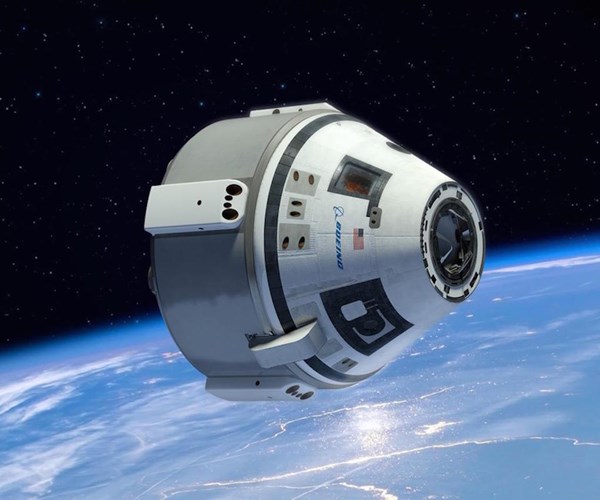Space: Where 3D Printing Innovates?
It’s called the “Final Frontier” but maybe space is actually a closer to a present-day trendsetter. What does that mean?

Well, there’s been a series of news items discussing how 3D printing is helping to launch various space programs. The most recent one comes from Solvay as the company is providing additive manufacturing lightweighting products to Oxford Performance Materials (OPM), which allow the development and manufacture of components for its low-Earth orbit aerospace project at Boeing.
In January, Oxford Performance Materials announced it has been selected by The Boeing Co. to manufacture 3D-printed structures for the Boeing CST-100 Starliner spacecraft, and OPM has begun shipping OXFAB production parts for installation (pictured below). The Starliner is designed to transport up to seven passengers, or a mix of crew and cargo, to low-Earth orbit destinations such as the International Space Station. It is under development in collaboration with NASA’s Commercial Crew Program. Oxford will manufacture more than 600 3D-printed parts for the Boeing CST-100 Starliner space taxis.
“From the project’s inception, we needed to provide not only significant weight and cost savings but also a drastic cut in lead-times,” says Bernard Plishtin, OPM’s chief ґуПуґ«ГЅ development officer. “This was made possible by Solvay’s reliable supply of high-performance materials for our specific additive manufacturing processes for 3D-printed aerospace structures.”
Excited to see what’s next on the horizon for 3D printing and space!
[1] copy.jpg;maxWidth=600)
Related Content
-
Automotive Awards Highlight ‘Firsts,’ Emerging Technologies
Annual SPE event recognizes sustainability as a major theme.
-
ICIS Launches: Ask ICIS Generative AI Commodities Assistant
Said to be the first of its kind, this AI assistant will enhance access to ICIS’ intelligence and insights for the energy and chemical markets.
-
Polymer Showdown — PPO vs. PA66: May the Best Material Win
Second in a series, an expert from plastics engineering consultancy The Madison Group pits leading thermoplastics against each other to see how they differ in processing characteristics, chemical resistance, thermal and mechanical performance, and more.









